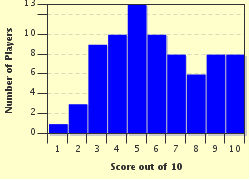Quiz Answer Key and Fun Facts
1. In 'Treasure Island' by Robert Louis Stevenson, Jim Hawkins discovers a mysterious map with an 'X' marking the spot of the location of buried treasure. To which former pirate, who had been staying in the Hawkins family's inn, did the map belong?
2. In Edgar Allan Poe's short story 'The Gold-Bug', William Legrand stumbles across a piece of parchment containing instructions on how to find the secret treasure buried by the pirate Captain Kidd. In what form were the instructions given?
3. 'Captain Kidd' and 'The Devil and Tom Walker' are both short stories by Washington Irving published in which collection under the pseudonym Geoffrey Crayon?
4. The 18th century work entitled 'A General History of the Robberies and Murders of the most notorious Pyrates', written under the pseudonym Captain Charles Johnson, falls into which literary genre?
5. When pirates aren't lurking about on tropical islands burying their treasure, they are out on the high seas collecting more of it. Which adventure novel by James Fenimore Cooper tells the story of Harry Wilder's interactions with a notorious pirate?
6. 'The Pirate', first published in 1822, was a novel set on the Orkney and Shetland Islands of Scotland. It was part of which immensely popular, but originally anonymous, series of historical novels?
7. Which novel by R. M. Ballantyne features a boy named Ralph Rover who is marooned on a Pacific island and later captured by pirates?
8. Enid Blyton's classic children's book 'Five on a Treasure Island' was the first of her stories to feature 'The Famous Five' - Julian, Dick, Anne, George and Timmy the dog. What did the treasure turn out to be?
9. What is the name of the character who narrated H. Rider Haggard's adventure novel 'King Solomon's Mines', and nearly died after being trapped with the fabled treasure contained in the eponymous site?
10. What is the name of the pirate who was the archenemy and nemesis of J.M. Barrie's "boy who wouldn't grow up"?
Source: Author
Fifiona81
This quiz was reviewed by FunTrivia editor
looney_tunes before going online.
Any errors found in FunTrivia content are routinely corrected through our feedback system.


